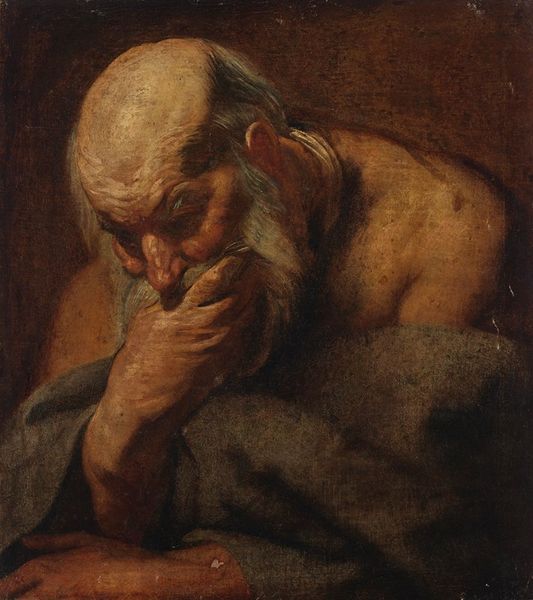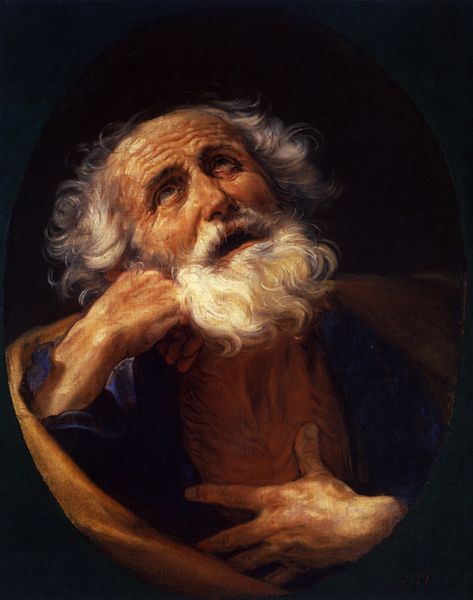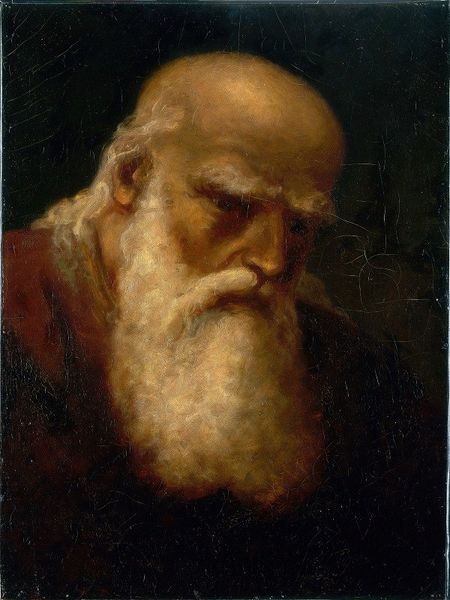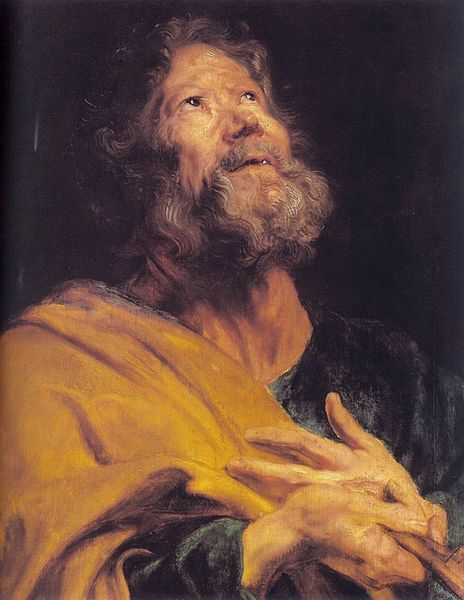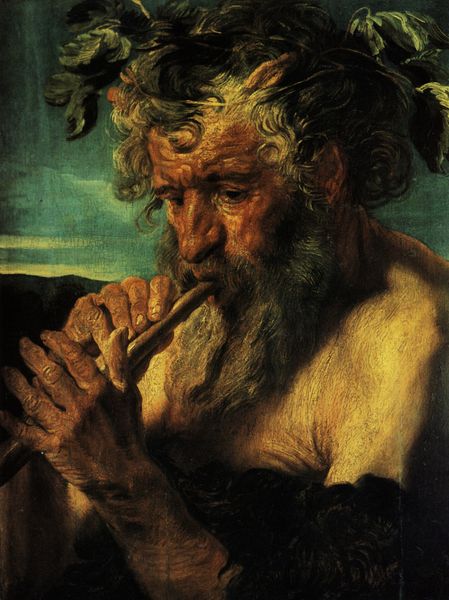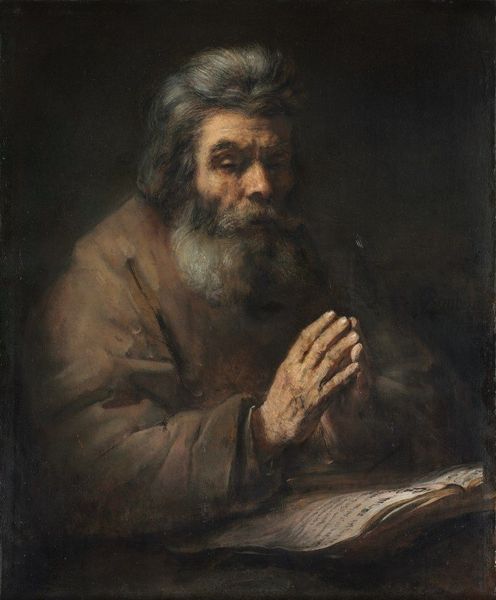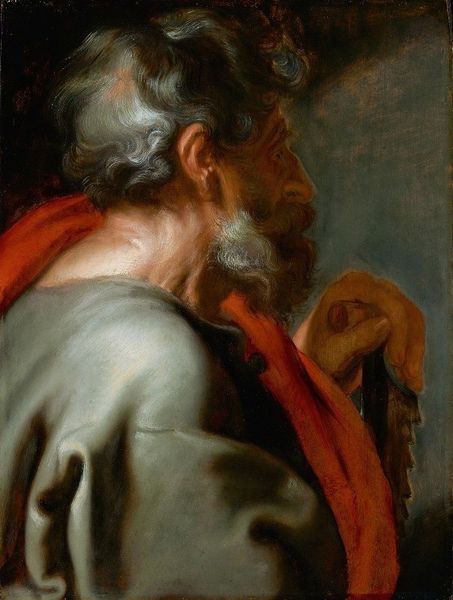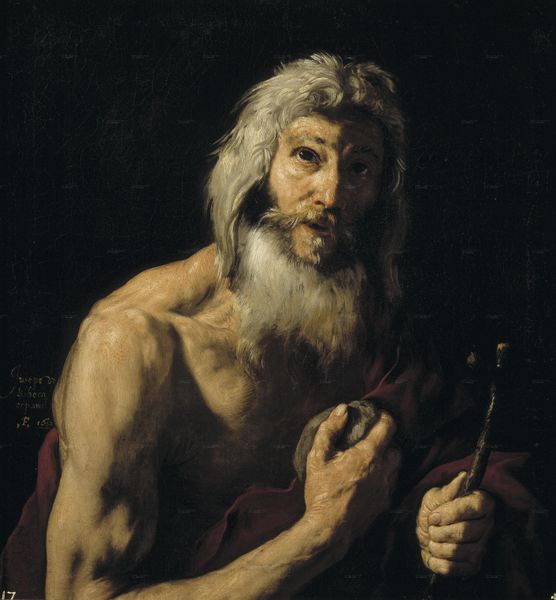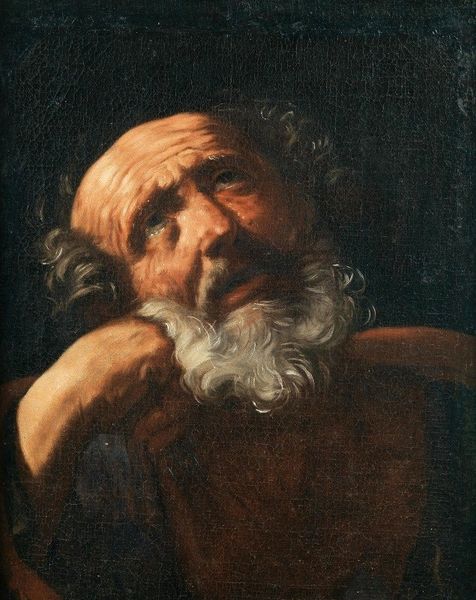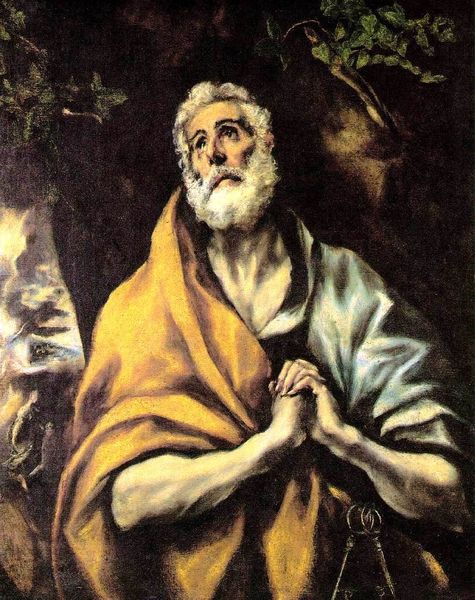
Dimensions: 29 x 25.5 cm
Copyright: Public domain
Editor: This is Francisco de Goya's "The Repentant Saint Peter," painted in 1824, using oil on canvas. The dark, dramatic lighting really emphasizes the saint's aged features, and the upward gaze feels very… emotional, maybe pleading. What do you see in this piece? Curator: I see layers upon layers of symbolism. The keys, of course, represent Saint Peter's role as the gatekeeper of Heaven, an attribute you will often see in paintings through time. But Goya, by focusing on repentance, taps into a deeper cultural memory. Editor: Repentance? Can you explain more? Curator: Think about Peter’s denial of Christ. That moment of profound human failing, captured here, becomes almost archetypal. This isn’t just about a saint; it’s about the potential for redemption that exists even after profound mistakes. The face lifted to heaven signifies how visual symbols capture emotions across time and cultural shifts. And see the placement of the keys, and the symbolic link between his hand, resting on them in a moment of self reflection? Editor: Oh, I see it now. He's burdened by them, almost. It's a weight of responsibility. I never really thought about it like that, but Goya's showing a very human side to Saint Peter. Curator: Exactly. He's capturing the internal struggle. And it’s that psychological depth, rendered through specific, loaded imagery, that gives the piece such staying power. Visual rhetoric! What have we learned through these details? Editor: Definitely the power of symbolism. An artist, across centuries, uses cultural touchstones to say much more about the emotional states of a single figure. Curator: And hopefully it gives you, and the viewer, an added depth to understanding iconography and visual vocabulary and its impact.
Comments
No comments
Be the first to comment and join the conversation on the ultimate creative platform.
